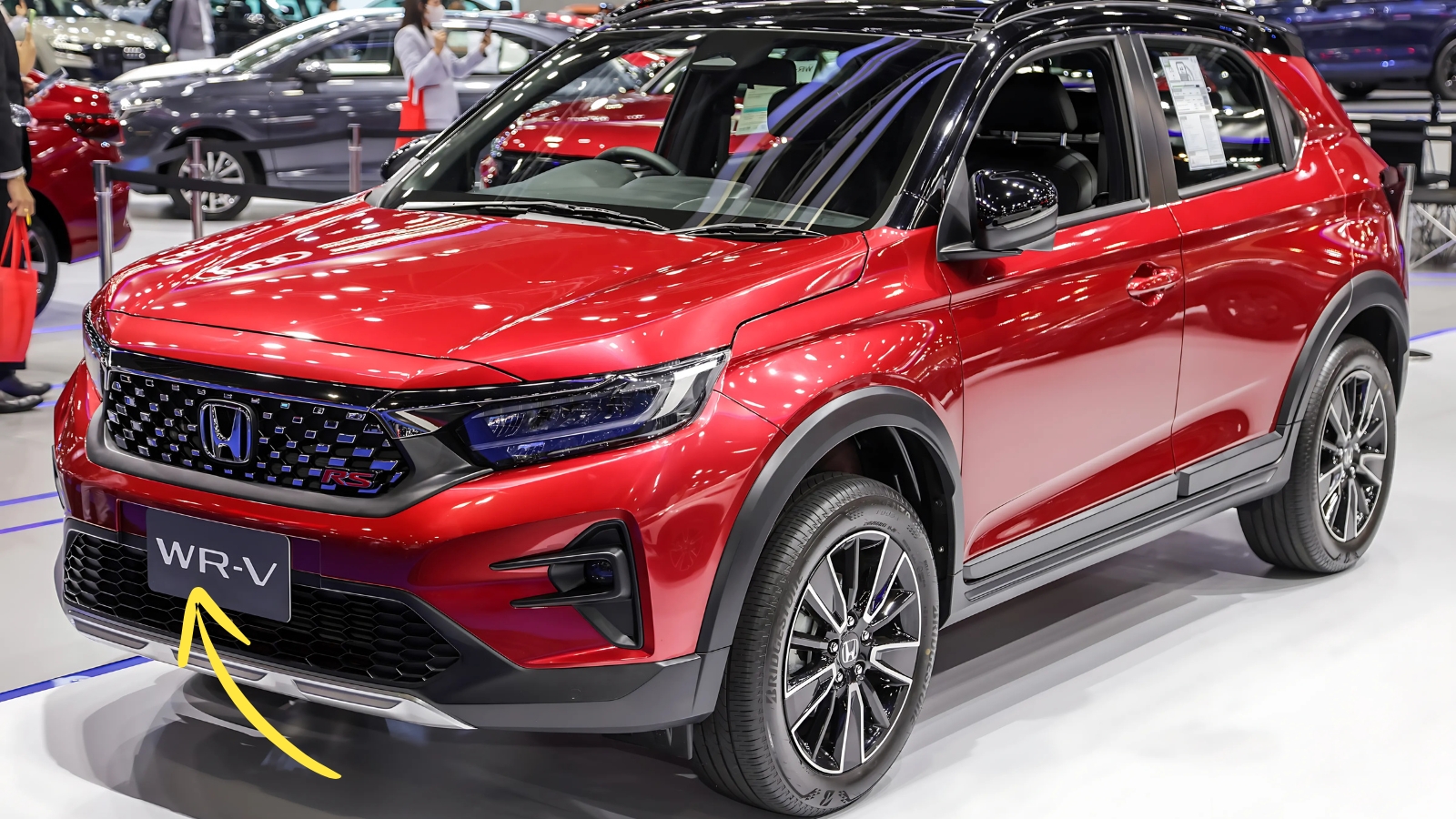Honda WRV: Honda has always marched to its own drummer in the Indian market, but few vehicles have been as polarizing as the WR-V. When it launched in 2017, this compact crossover represented Honda’s attempt to crack the code of Indian SUV preferences without abandoning their engineering principles. The WR-V wasn’t just another model launch – it was Honda’s philosophical statement about what a practical urban vehicle should be. Yet despite offering genuine advantages over conventional hatchbacks, the WR-V never quite achieved the market breakthrough Honda anticipated. What went right, what went wrong, and why does this crossover remain one of the most interesting what-if stories in recent Indian automotive history?
Honda WRV Design Vision: SUV Aesthetics Meet Hatchback Reality
The WR-V’s design story begins with Honda’s challenge of creating SUV visual appeal within the constraints of a hatchback platform. Unlike manufacturers who simply added plastic cladding and called it a crossover, Honda approached the transformation with genuine design intent. The result was a vehicle that looked purposeful rather than pretentious, rugged without appearing cartoonish.
The front fascia features a bold grille design that creates visual width while incorporating Honda’s family identity. The headlamp units, while not LED, provide adequate illumination and integrate well with the overall design theme. Chrome accents add premium touches without overwhelming the clean lines that define the WR-V’s personality.
What sets the WR-V apart is how successfully Honda managed the proportions. The increased ride height and plastic body cladding create genuine SUV presence without making the vehicle look awkward or top-heavy. The side profile benefits from well-placed character lines and wheel arch extensions that add visual drama while serving practical purposes.
The rear design represents perhaps the most successful aspect of the WR-V’s styling. The taillamp graphics, spare wheel cover integration, and rear bumper design create a cohesive appearance that feels substantial and well-resolved. Unlike many crossovers that look unfinished from behind, the WR-V maintains visual interest from every angle.
Color options reflect Honda’s understanding of Indian preferences, with shades like Radiant Red and Golden Brown appealing to buyers who want their vehicles to stand out, while conservative options like Platinum White satisfy more traditional tastes.
Interior Philosophy: Space Optimization Over Visual Drama
Step inside the WR-V, and you immediately appreciate Honda’s commitment to practical space utilization over flashy design elements. The dashboard layout feels familiar to existing Honda owners while incorporating crossover-specific touches that reinforce the vehicle’s rugged character. Material quality reflects the price point accurately – not premium, but certainly durable and well-assembled.
The seating position represents one of the WR-V’s strongest selling points. The elevated driving position provides excellent visibility in traffic while maintaining car-like entry and exit convenience. Unlike many SUVs where getting in feels like climbing, the WR-V offers the perfect compromise between commanding view and accessibility.
Rear seat space genuinely impresses, with legroom that exceeds most hatchbacks and headroom that accommodates tall passengers comfortably. The seat cushioning provides adequate support for extended journeys, while the upright seating position prevents the cramped feeling common in low-slung hatchbacks.
Storage solutions throughout the cabin demonstrate Honda’s practical approach to interior design. The glove compartment, door pockets, and cup holders are positioned sensibly and sized appropriately for real-world use. The boot space, while not exceptional, provides adequate capacity for weekend trips and shopping runs.
Performance Character: Efficient Rather Than Exciting
The WR-V’s engine options reflect Honda’s conservative approach to powertrain development. The 1.2-liter petrol engine produces 90 horsepower, figures that sound modest but translate to adequate performance for urban driving and highway cruising. The engine character emphasizes smoothness and refinement over outright power, creating a driving experience that feels relaxed rather than urgent.
The 1.5-liter diesel option provides better torque delivery that suits the WR-V’s crossover character more naturally. With 100 horsepower and 200 Nm of torque, the diesel engine offers confident performance for loaded conditions and highway driving. More importantly, the diesel delivers impressive fuel efficiency that justifies the premium for high-mileage drivers.
Both manual transmissions operate smoothly with well-defined gate patterns that make gear changes precise and satisfying. The CVT automatic option, while not as engaging as traditional automatics, provides smooth operation that suits the WR-V’s relaxed character perfectly.
Ride quality represents perhaps the WR-V’s greatest strength. Honda engineers tuned the suspension to absorb road irregularities effectively while maintaining reasonable handling composure. The higher ground clearance translates to genuine confidence over speed breakers and rough roads without sacrificing on-road stability.
Honda WRV Market Reality: Right Product, Wrong Timing?
Honda positioned the WR-V strategically between conventional hatchbacks and compact SUVs, with pricing that reflected the additional engineering and features. Starting around ₹8.5 lakhs and extending to ₹13 lakhs for top variants, the WR-V offered crossover benefits at reasonable prices.
However, market response proved lukewarm, suggesting that Indian buyers preferred either genuine SUVs or traditional hatchbacks rather than the compromise solution Honda offered.

